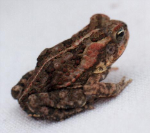What's the problem
Cane toads are a major problem in Australia, so bad in fact they are a declared Key Threatening process under federal Legislation in the Environment protection and Biodiversity Conservation Act 1999(EPBC Act). They are one of the worst invasive species in the world. Cane toads breed up into huge numbers and dominate the ecology in the area.The are listed as a threatening process because they kill native predators, compete with native wildlife for food and breeding and shelter sites and eat native wildlife.
Legislation in the Environment protection and Biodiversity Conservation Act 1999(EPBC Act). They are one of the worst invasive species in the world. Cane toads breed up into huge numbers and dominate the ecology in the area.The are listed as a threatening process because they kill native predators, compete with native wildlife for food and breeding and shelter sites and eat native wildlife.
One of the many failures of the Australian Science community in relation to cane toads, they did introduce them in the first place as well!) is that almost no research has been done to clarify the exact nature and extent of these various impacts.
Sadly scientists use this as an excuse to hide behind the argument that there is “no proof “ that toads have these impacts. Whilst this is true, it is equally true to say that there is “no proof “ that they do not! What are we supposed to think to see animals like our big varanids vanish as the cane toads arrived?
In a recent research project we collected 23,000 cane toads from and area of about 110 sq Kms of savanna woodland. The food and shelter sites these toads were using up should be being used by native animals.
We believe that we should be assuming there are significant problems being caused by cane toads and, until it can be proved otherwise, that we should be acting to minimse the damage they are causing in our environment and ecosystems.
In areas where some research has been done it does not look good. Sean Doody’s research on the Daly River has shown massive declines in species like Varanus Panoptes, and Varanus mitchelli. Sean’s research also points to one of the complexities in the impact toads have. The Varanus panoptes (Yellow Spotted monitor) population crashed in the first year but the Varanus mitchelli (Mitchell’s Water monitor) population didn’t crash until the following year. The reason? Mitchelli are quite small and only impacted by juvenile toads which are both small enough for the monitors to eat and are also active during daylight hours when the monitors are feeding.
Small toads have a very different pattern of behaviour to adult toads and there are a number of smaller reptiles which are likely to be severely impacted by these small toads. We have seen local extinctions of frill neck lizards caused in this way, we have seen other small dead reptiles such as Varanus Scalaris, small whip snakes, and Sean’s research on Mitchelli. Has anyone done any research in this area?
Darwin has still got lots of these small reptiles because we have had very few successful toad breeding events in the area because of the work of FrogWatch and the Darwin population.













